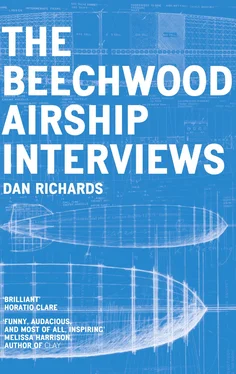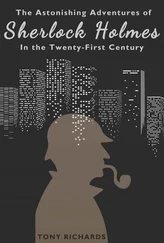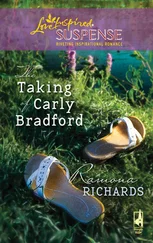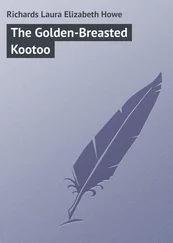Like a massive womb … with Jägermeister.
Hulking cast-iron radiators hugged the walls and creaked, their heat rippling the curtains. The hall was always warm, even on the dark mornings as I swept and served coffee to the few brave souls awake – or yet to go to sleep.
On quiet evenings, the staff would play Scrabble or perch at the bar and talk, and it was on one of these slow nights that Rob, the manager, and I hit upon the idea of an airship.
We were staring into space, I remember; talking about the bar.
At this point the bar was one of the few places in the school where students could exhibit their work, and the walls, ledges and large windowsills were crammed with sculptures and paintings. A huge canvas by Bill Drummond hung on one side of the hall which said GET YOUR HAIR CUT, one of a series of works the artist had lent to Rob to display in the bar. I think Rob and I were talking about this as we stared up into the eaves, discussing GET YOUR HAIR CUT, the student art on show, the roof – our conversation spinning off at intervals but always arcing back to large student work and the roof space.
That morning I had been exploring Norwich and discovered the brass plaques on the doors of City Hall which depict the history and trades of the town. One showed an engineer working with a propeller – a reference to the firm Boulton & Paul Ltd, a general manufacturing firm which built aircraft and airships among other things. *
Talking to the art school caretakers about the doors later that week I was told how Boulton & Paul Ltd had won the contract to construct the frame of the fateful R101 airship in the 1920s, then the largest aircraft ever built. *One old boy recalled being held aloft as the ship flew over Norwich on a test flight.
‘The whole city stopped to watch it circle and pass. Everyone was out in the streets.’ *
Maybe R101 was circling and passing through my mind that night because the conversation about GET YOUR HAIR CUT, student work, and the roof came to rest on me, suggesting the construction of a large-scale airship above the bar. That would be brilliant, we agreed; and then went back to staring into space.
• • • • •
A week passed. I knew Rob had probably forgotten about our conversation and I still had every opportunity to forget it too and walk away, but the seed was sown and the space was there, waiting. I couldn’t look up any more without seeing the negative space of a large, ominous airship hanging there, goading me.
• • • • •
A month into the winter term I had drawn and researched to a point where I’d some idea of the airship’s size. I wanted the balloon to loom in a big room and as such it would have to be large. Six metres long, perhaps; over a metre in diameter. Also, it would have to be light so as to hang from the trusses without causing damage and, most importantly, look right. If weighty and over-engineered it would look wrong, I knew – it had to appear to float. Wood and paper, then – flexible, strong woods covered in paper like a kite.
However, it became clear that there wasn’t the space for me to build it in the art school workshops. I remember I sought out a technician and we paced the airship out; too big. Not that there seemed a surfeit of students making massive wooden things; not that there seemed much being made at all – the wood workshops seemed principally employed to make canvas stretchers and the main wood of choice appeared to be ‘ply’.
My rough notes about the ‘springing/laminate potential of beech and birch’ were met with polite concern. I was pointed towards the birch ply and chipboard.
‘That’s not really wood, though, is it?’ I asked the technician.
I think he took that rather hard.
I decided to let it lie.
Within a week it wasn’t the woodwork which concerned me as much as the people coming out of it to ask why I, a student on a two-year part-time writing MA, wanted to build things at all.
• • • • •
I am writing this introduction a couple of years after the events I’m describing and it’s strange to think now but my idea of an art school can’t really exist any more. The new fee system introduced after my time in Norwich has brought an end to the idea of studying with an open mind ‘just to see what happens’. I don’t think you can really do that if you’re paying £30,000.
The notion of value has shifted and the vocational is king once more. To pay out so much ‘just to see what happens’ seems decadent; the fees will surely cost out those unsure of what they want to become, or looking for an adventure.
Jarvis Cocker expressed the idea well:
‘As much as I wanted to study something, I went to Saint Martin’s because I just wanted to get out of Sheffield. I just looked at the colleges and it said, “This one is on Charing Cross Road”, so I thought, “Great, three years in Soho. Summat’s going to happen.” And it did.’ *
To arrive in a space and be inspired to make art by its fabric and atmosphere – if I’d been asked what my ideal of an art school was before I arrived in Norwich, that would have been close … but maybe we’ve moved into a post-impulsive airship epoch.
Today, all government funding cut, I note the school has closed down my course and moved towards a more logical, verifiably employable roster of subjects – the abstruse hinterlands of Fine Art and Sculpture squeezed in favour of the more honest fare of Fashion, Graphic Design and Animation; a white sea of Macs sweeping all before it.
But let’s return to the winter of 2006 and the wood workshop where I’m not going to work and look around. There are tools here. The ones on show are old and battered. The better ones are locked away, we’re told, because otherwise they’d walk. Security is a problem and the technician cannot be everywhere at once, so the available kit walks and the rest is kept hidden.
Paranoia permeates the space and I feel bad for the technician, who’s doubtless doing his best but he’s under pressure and having to take on responsibilities beyond his original remit. In this context it’s reasonable to suppose that writers on part-time MAs talking about ambitious zeppelin projects would be given short shrift. He has to be there. He’s put upon. He’s busy. I bet he had people in there ‘talking’ all the time. Time wasters, charlatans, and opportunists – out to nick the shiny G-clamps, light-fingered magpies with asymmetric haircuts. Bastards to a man!
Now, it’s all very well writing this down with hindsight and retrospect and all the other tools available after the event – indulging in a bit of the third person to suggest a distance between now and then, the school and me, the technician and me – but it’s important to say that I didn’t help my cause.
I don’t like confrontation. Hate it. I felt plywood wasn’t the way to go and should have stood my ground, but it was much easier to smile along and nod and agree we should order a load of it and then run away; it was the hiding for the next two years which proved tricky, especially since the wood workshop stood at the entrance to one of the main buildings at the school and I knew I’d upset a man with a large collection of hammers. *
• • • • •
In early 2007 I travelled down to Henley-on-Thames to ask a pair of boat builders how best to construct an airship.
En route to London, the previous week, I’d spoken to my father at length about the project and he’d suggested that to question received wisdom, to experiment, fail and learn, was the point of a degree. Better to fail on your own terms than be led astray and compromise:
‘You know, you’ll spend ages building it out of the wrong stuff to please someone else, it’ll go wrong and you’ll end up smashing it up with an axe, or something …’ he pronounced near Heston Services, adding, ‘You’ve made your bed now anyway.’ *
Читать дальше












